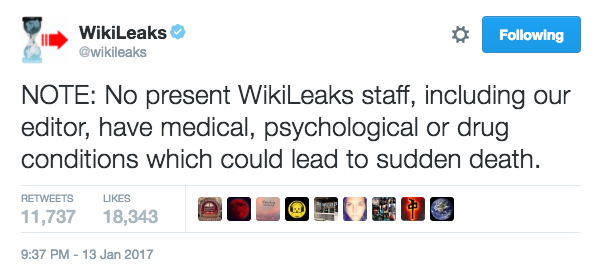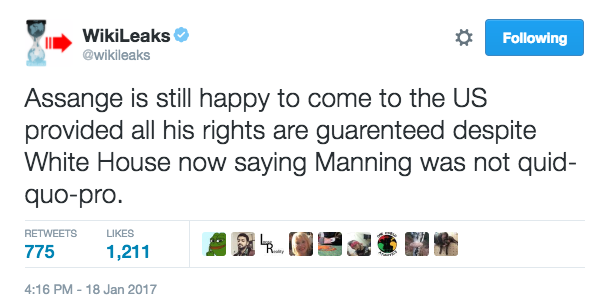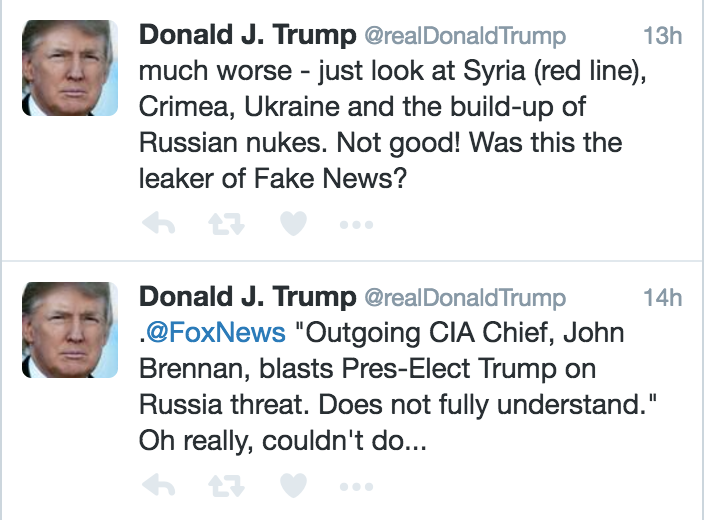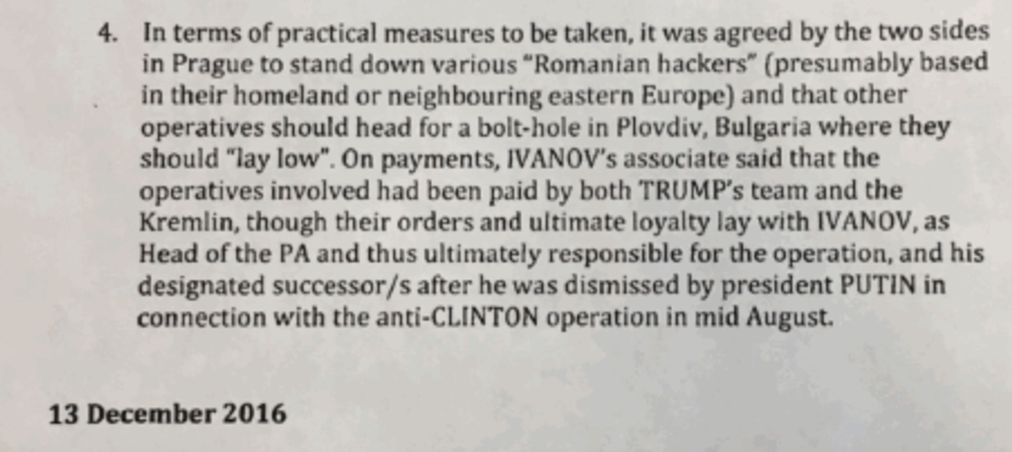On Friday, the Senate confirmed the first two of President Trump’s nominees: Generals Mattis and Kelly to run DOD and DHS, respectfully. But it did not confirm the third nominee slotted for that day, Mike Pompeo. In part because the nomination was not dealt with in regular fashion in the Senate Intelligence Committee (which did not vote out his nomination), Ron Wyden managed to force Mitch McConnell to hold 6 hours of debate tomorrow on his nomination.
Wyden has suggested we need to have more debate because Pompeo hasn’t answered all the questions posed to him. And it is true that Wyden has concerns about the following issues. But perhaps most of all, Wyden’s questions suggest he is concerned that the Trump administration will use information the Russians hacked against Americans.
In follow-up questions posed to Pompeo, Wyden expressed concern about Pompeo’s:
- Enthusiasm for using bulk collections of “lifestyle” information on Americans
- Willingness to have the CIA engage in activities the Ambassador or other Chief of Mission disagrees with
- Squirminess about when the CIA can kill a US person
- Dodginess on classifying torture information that reveals illegal, embarrassing, competitive, or otherwise unclassified information
But as I said, Wyden’s chief concern appears that Pompeo will use information the Russians have or will give the Trump administration against Americans.
Enthusiasm for using bulk collections of “lifestyle” information on Americans
A big point of concern for Wyden and Martin Heinrich throughout Pompeo’s confirmation process is this op-ed he wrote at the beginning of last year. Based in part on the fact that the intelligence community didn’t find the Tashfeen Malik’s anti-American statements on non-public social media, and in part on the demonstrably false claim that the IC didn’t find the Garland attackers beforehand (in reality, the FBI was cheering them on), Pompeo argued we need to collect still more data. “Congress should pass a law re-establishing collection of all metadata, and combining it with publicly available financial and lifestyle information into a comprehensive, searchable database,” he wrote.
Pompeo has dodged questions about precisely what “lifestyle” information he wants to collect — though it surely includes Twitter’s firehose of data from Dataminr. Sadly, he repeatedly pointed to executive orders in his answers, and the new EO 12333 sharing rules permit the access of “public” information, which can include information from data brokers (though Pompeo claims ignorance of what he might want to use). So while Wyden is concerned that Pompeo will start dragnetting Americans, sadly he has been enabled to do so by one of the last things Obama did.
Willingness to have the CIA engage in activities the Ambassador or other Chief of Mission disagrees with
Another concern Wyden raised pertains to disagreements between the Chief of Mission (the top diplomat in a country) and the CIA Station Chief. This has been an issue in the past at least as it pertains to drone strikes in Pakistan and the torture program, where the Ambassador was either not informed or not properly consulted on CIA activities within a country.
When asked a yes or no question whether he would permit CIA to conduct activities even while an outstanding disagreement remained, Pompeo refused to answer, stating instead that he would seek an expeditious decision from the President. Effectively, he suggested if he were losing a disagreement with State, he’d get Trump to override State.
Squirminess about when the CIA can kill a US person
Wyden, who has long sought guidelines on when the US can kill an American citizen, returned to pre-hearing questions on this topic. After citing the Drone Rule Book requirement that DOJ be involved before taking action against a US person, he asked whether Pompeo agreed with the requirement. Pompeo basically said the US “must consider an American citizen’s constitutional rights prior to targeting him” and “CIA attorneys frequently consult with” DOJ (though left open the possibility of relying on less formal analysis). Ultimately, Pompeo dodged laying out any additional checks he’d following before killing an American.
Dodginess on classifying torture information that reveals illegal, embarrassing, competitive, or otherwise unclassified information
Wyden asked Pompeo if he disagreed with the prohibitions on classifying information to “(1) conceal violations of law, inefficiency, or administrative error; (2) prevent embarrassment to a person, organization, or agency; (3) restrain competition; or ( 4) prevent or delay the release of information that does not require protection in the interest of national security,” prohibitions that existed in Clinton’s, George W. Bush’s, and Obama’s EOs on classified information. Pompeo said he did not. However, immediately in that context, Wyden asked about the Torture Report, and Pompeo dodged all questions about declassifying the torture report.
Willingness to use information obtained by Russians hacking Americans
But as I said, Wyden’s persistent concerns in his post-hearing questions pertained to whether and how Pompeo would be willing to cooperate with the Russians. Raising a Pompeo hearing comment that if a foreign partner gave the CIA information on US persons “independently,” “it may be appropriate of CIA to collect [that] information in bulk,” Wyden raised Trump’s encouragement of Russian hacking and asked what circumstances would make foreign collection so improper that CIA should not receive such information. Pompeo responded, “information obtained through such egregious conduct may be appropriate for the CIA to use or disseminate.”
Wyden then listed out a bunch of conditions, such as information coming from an adversary, to disrupt US democracy, information implicating First Amendment protected political activity, or information affecting thousands or millions of Americans. “The listed conditions could all be relevant,” Pompeo responded, remaining non-committal.
Wyden raised a Pompeo comment suggesting rules for accessing US person communications under EO 12333 and asked if that was true of information known to include significant US person information. Pompeo said he would consult experts and AGG guidelines (which, arguably, are this flexible).
Wyden raised Pompeo’s promise to expand intelligence cooperation with state and non-state partners, and asked specifically whether this included Russia, and if so how Pompeo planned on dealing with the counterintelligence risks of doing so. Pompeo said he as not referring to “any specific partners,” said, “CIA already has a strong counterintelligence program,” and said anything he did would comply with law and standard practices and be noticed to Congress.
Wyden then asked if “it is legal or appropriate for the White House to obtain from a foreign partner…information that includes the communications of U.S. persons” and if he learned that they were doing so, whether he would inform Congress of it. Pompeo responded “I am not aware of a DCIA role in supervising White House activities or providing legal counsel to the White House on its activities,” apparently committing only to informing Congress of CIA’s own activities.
In short, there are a lot of reasons to be worried about Pompeo as Director of CIA. But Wyden seems most worried that CIA (and the White House) will use information Russia gives them against American citizens.







